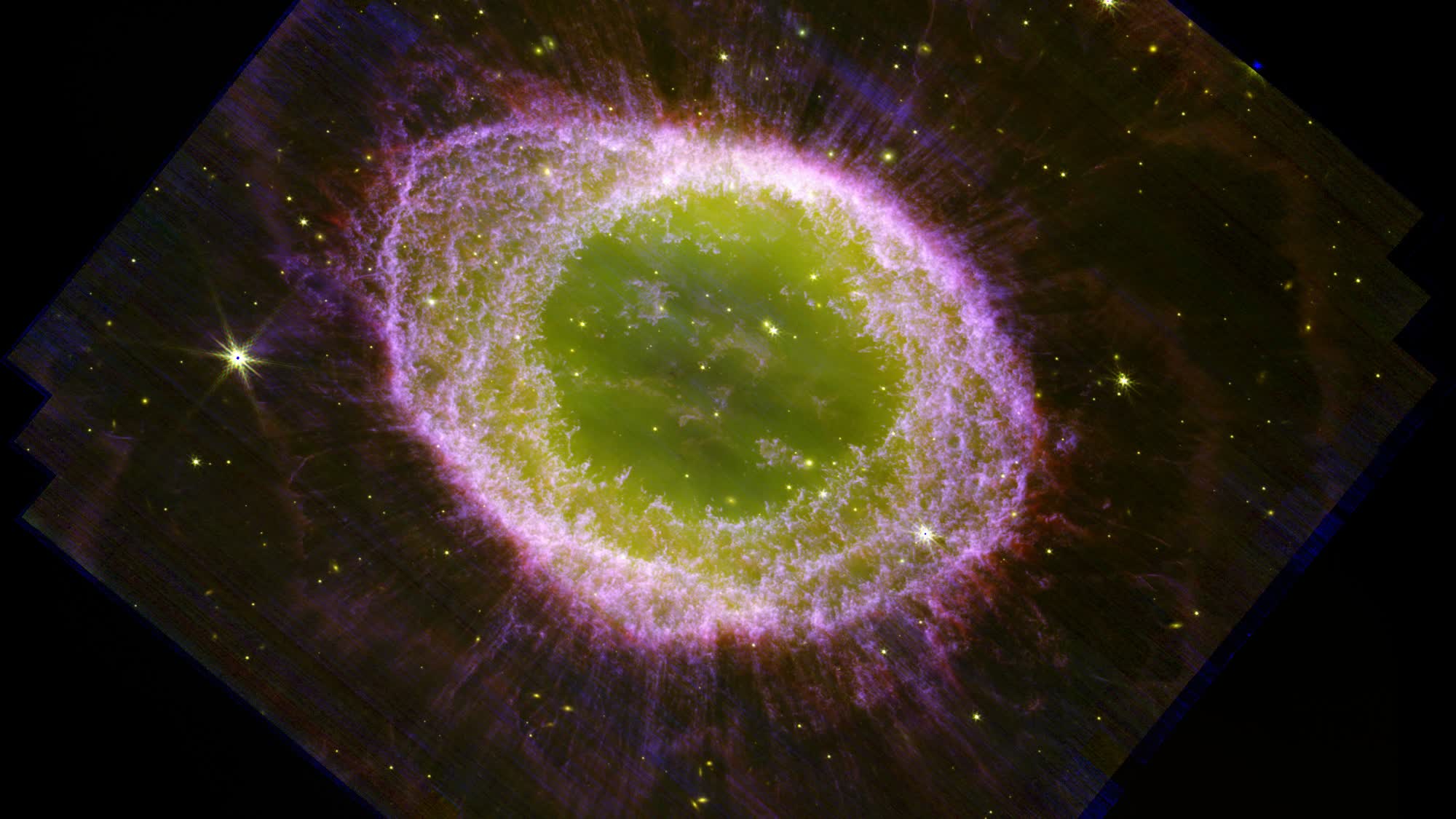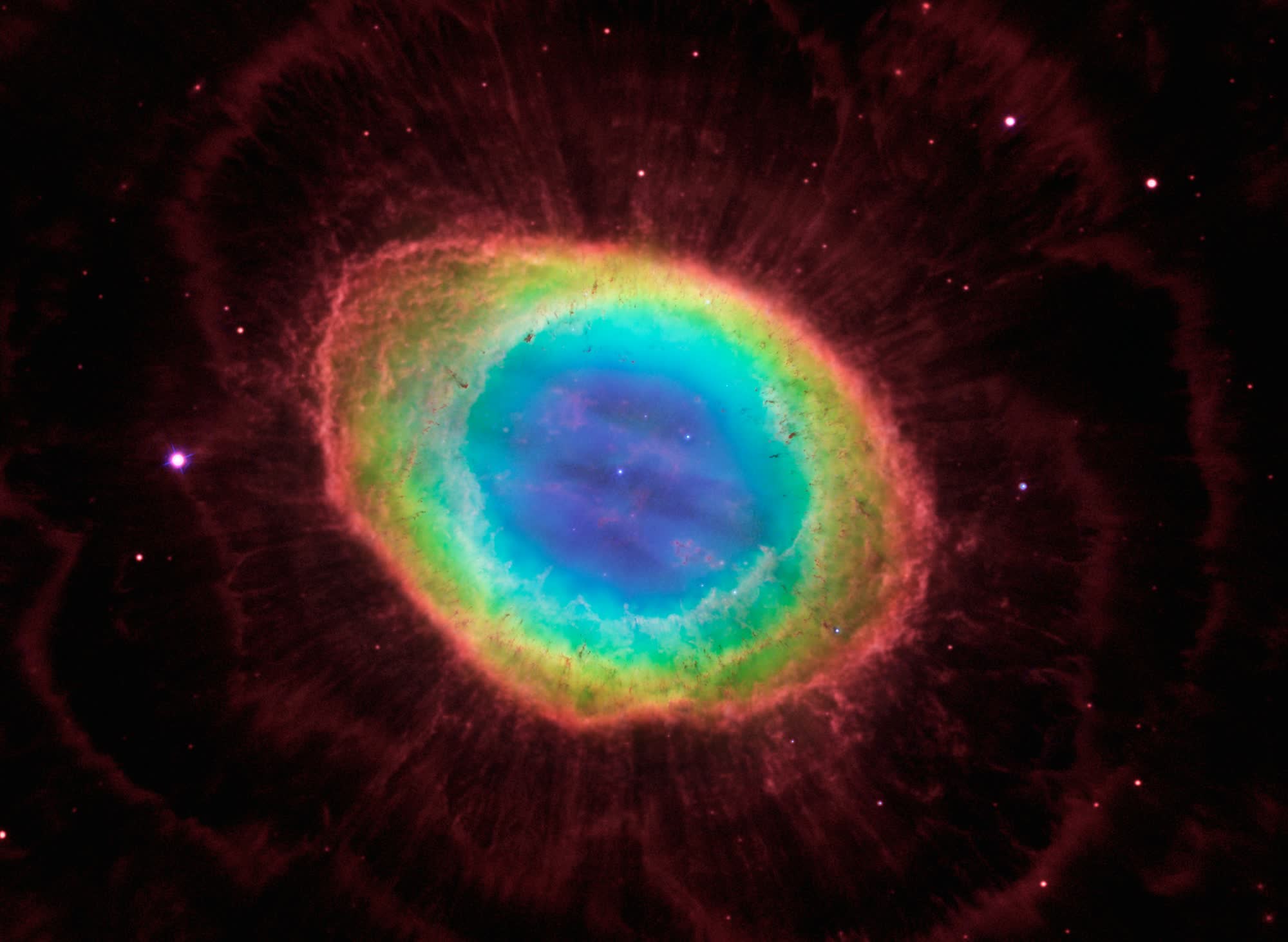In brief: An international team of astronomers recently published new images of Messier 57, more commonly known as the Ring Nebula, captured using the James Webb Space Telescope. Nebulae like Messier 57 are formed when a star, in its final stages of life, expels its outer layers out into space.
The Ring Nebula is a popular target in the night sky, and for good reason. It was discovered by the French astronomer Antoine Darquier de Pellepoix in 1779 and at 2,570 light-years away, is relatively close to Earth. According to NASA, it has an apparent magnitude of 8.8, can be spotted with moderately sized telescopes, and is best observed during the month of August.
Mike Barlow, the co-lead scientist of the JWST Ring Nebula Imaging Project, said the high resolution images provided by Webb highlight not only the intricate details of the nebula's expanding outer shell but also reveal the inner region around the central white dwarf in exquisite clarity.
"We are witnessing the final chapters of a star's life, a preview of the Sun's distant future so to speak, and JWST's observations have opened a new window into understanding these awe-inspiring cosmic events," Barlow added.
As researchers from Western University point out, nebula come in a variety of shapes and patters – the result of a complex interplay of physical processes that astronomers do not yet fully understand. Much like fireworks, varying chemical elements emit lights of different colors, resulting in awe-inspiring visuals.
It's not just the pretty colors that make the Ring Nebula and others like it so fascinating. The different colors provide a wealth of scientific insight into the processes of stellar evolution, said Nick Cox, a co-lead on the project.
NASA's Hubble Space Telescope in 2013 captured this view of the Ring Nebula. C. Robert O'Dell of Vanderbilt University described the nebula at the time as less of a bagel and more more of a jelly doughnut because it is filled with material in the middle.
In another six billion years or so, our Sun will experience a similar demise. It won't be as visually stunning, O'Dell noted, because the Sun is not as massive as the Ring Nebula's central star.

